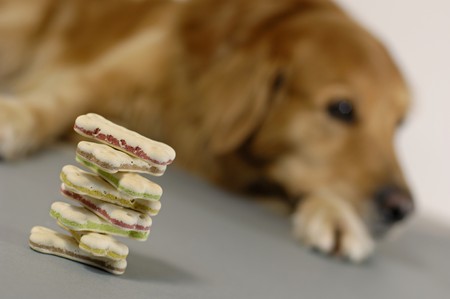Understanding Chronic Pain in Senior Pets
As pets age, their bodies go through many changes that can lead to chronic pain. Just like humans, older animals may experience joint degeneration, arthritis, or other conditions that affect their mobility and overall well-being. Recognizing the signs of chronic pain early can help improve their quality of life.
How Aging Affects Pets
Aging impacts pets in various ways, from reduced energy levels to decreased muscle mass. Their joints may become stiff, and they might struggle with everyday activities like climbing stairs or getting up from a resting position. Some pets also develop age-related diseases that contribute to discomfort and pain.
Signs of Chronic Pain in Senior Pets
Since pets cannot verbally communicate their pain, it’s essential to observe changes in their behavior and physical condition. Here are some common signs that your pet may be experiencing chronic pain:
| Category | Signs of Chronic Pain |
|---|---|
| Mobility Changes | Limping, stiffness, difficulty standing up, reluctance to jump or climb stairs |
| Behavioral Shifts | Irritability, aggression, increased vocalization (whining or whimpering), withdrawal from social interaction |
| Appetite & Sleep Patterns | Loss of appetite, weight loss, restlessness, excessive sleeping, difficulty finding a comfortable position |
| Panting & Grooming Habits | Panting even when not hot or active, overgrooming certain areas due to discomfort, lack of grooming leading to unkempt fur |
The Importance of Early Detection
Catching chronic pain early allows you to take action before your pets condition worsens. Regular vet check-ups are crucial for monitoring health changes and addressing any emerging issues. If you notice any of the signs above, consult your veterinarian to discuss possible treatment options.
2. Veterinary Treatments and Pain Management
When it comes to managing chronic pain in aging pets, veterinarians offer a variety of traditional medical treatments. These treatments aim to reduce discomfort, improve mobility, and enhance your pets quality of life.
Prescription Pain Relievers
Veterinarians may prescribe pain medications specifically designed for pets. These can help manage moderate to severe pain effectively. Some common options include:
| Medication Type | Examples | Purpose |
|---|---|---|
| Non-Steroidal Anti-Inflammatory Drugs (NSAIDs) | Carprofen, Meloxicam | Reduce inflammation and relieve pain |
| Opioids | Tramadol, Buprenorphine | Treat severe or post-surgical pain |
| Gabapentinoids | Gabapentin | Manage nerve-related pain |
| Corticosteroids | Prednisone, Dexamethasone | Help with inflammation-related pain |
Anti-Inflammatory Medications
Aging pets often suffer from joint inflammation due to arthritis or other degenerative conditions. NSAIDs are commonly prescribed to control this inflammation. However, long-term use should be monitored by a veterinarian to prevent potential side effects such as gastrointestinal issues or liver damage.
Physical Therapy Options
In addition to medication, physical therapy plays a crucial role in managing chronic pain. Some effective therapies include:
- Hydrotherapy: Water-based exercises help reduce joint stress while improving mobility.
- Massage Therapy: Helps improve circulation and reduce muscle stiffness.
- Laser Therapy: Uses low-level lasers to stimulate healing and relieve pain.
- Acupuncture: A traditional practice that can help alleviate chronic pain in pets.
- Chiropractic Care: Adjustments that may improve spinal health and mobility.
Your veterinarian will assess your pet’s condition and recommend the best combination of treatments based on their specific needs. By incorporating veterinary-prescribed medications and therapeutic techniques, you can help your aging pet stay comfortable and active.
![]()
3. Alternative and Holistic Pain Relief Options
When traditional medications and therapies arent enough or if youre looking for complementary treatments, alternative and holistic approaches can help manage chronic pain in aging pets. These methods focus on improving overall well-being while reducing discomfort.
Acupuncture
Acupuncture is an ancient practice that involves inserting thin needles into specific points on the body to stimulate nerves, improve circulation, and release natural pain-relieving chemicals. Many pet owners have found success in using acupuncture to manage arthritis and joint pain in older dogs and cats.
Chiropractic Care
Chiropractic adjustments for pets focus on aligning the spine and musculoskeletal system to relieve pressure on nerves and improve mobility. This treatment can be especially beneficial for senior pets suffering from back pain, stiffness, or joint issues.
Laser Therapy
Cold laser therapy is a non-invasive treatment that uses light energy to reduce inflammation, promote healing, and alleviate pain. Its commonly used for conditions like arthritis, hip dysplasia, and post-surgical recovery.
Hydrotherapy
Hydrotherapy involves controlled swimming or walking in water to help pets exercise without putting stress on their joints. This therapy is particularly useful for dogs with arthritis, hip dysplasia, or recovering from surgery.
Comparison of Alternative Pain Relief Options
| Treatment | Main Benefits | Best For |
|---|---|---|
| Acupuncture | Pain relief, improved circulation | Arthritis, joint pain |
| Chiropractic Care | Spinal alignment, improved mobility | Back pain, stiffness |
| Laser Therapy | Reduces inflammation, promotes healing | Surgical recovery, chronic pain |
| Hydrotherapy | Low-impact exercise, muscle strengthening | Hip dysplasia, arthritis |
If youre considering alternative therapies for your pet, its always best to consult with a veterinarian who specializes in these treatments. A combination of traditional medicine and holistic approaches may provide the most effective pain management plan for your aging pet.
4. Nutritional Support and Supplements
As pets age, their nutritional needs change, and providing the right diet and supplements can make a significant difference in managing chronic pain. A well-balanced diet, along with targeted supplements, can support joint health, reduce inflammation, and improve overall well-being.
Choosing the Right Diet for Senior Pets
Aging pets benefit from diets rich in high-quality protein, healthy fats, and essential vitamins to maintain muscle mass and energy levels. Its important to select pet food that includes anti-inflammatory ingredients like fish oil and antioxidants to help manage pain naturally.
Key Supplements for Joint Health
Joint supplements play a crucial role in maintaining mobility and reducing stiffness in senior pets. Below are some of the most effective options:
| Supplement | Benefits |
|---|---|
| Glucosamine | Supports cartilage health and helps slow joint deterioration. |
| Chondroitin | Works with glucosamine to improve joint lubrication and elasticity. |
| Methylsulfonylmethane (MSM) | Reduces inflammation and promotes tissue repair. |
| Hyaluronic Acid | Aids in joint cushioning and flexibility. |
| Tumeric/Curcumin | Naturally reduces inflammation with antioxidant properties. |
The Role of Omega-3 Fatty Acids
Omega-3 fatty acids, commonly found in fish oil, have powerful anti-inflammatory effects that can help alleviate joint pain in aging pets. They also contribute to heart health, cognitive function, and a healthier coat.
Sources of Omega-3s for Pets:
- Fish Oil: Salmon, sardine, or krill oil provide high-quality omega-3s.
- Flaxseed Oil: A plant-based alternative for dogs but less effective for cats.
- Green-Lipped Mussels: A natural source of omega-3s plus additional joint-supporting nutrients.
Tips for Incorporating Supplements into Your Pet’s Diet
If your pet is picky about taking supplements, consider these tips:
- Mix with Food: Blend powders or liquid supplements into wet food for better acceptance.
- Pill Pockets: Use flavored treats designed to hide pills.
- Select Chewable Options: Many supplements come in tasty chewable forms that pets enjoy.
- Sneak It In: Wrap tablets in peanut butter or another favorite treat.
5. At-Home Care and Lifestyle Adjustments
Helping an aging pet cope with chronic pain involves making thoughtful changes to their home environment and daily routine. Simple adjustments can improve their comfort and mobility while reducing stress on their joints.
Creating a Comfortable Living Space
Your pet’s environment plays a big role in managing their pain. Making a few modifications can significantly enhance their quality of life.
Essential Home Adjustments
| Adjustment | Benefits |
|---|---|
| Orthopedic Beds | Provide joint support and reduce pressure points |
| Non-Slip Rugs | Prevent slipping on hardwood or tile floors |
| Elevated Food & Water Bowls | Reduce strain on the neck and spine |
| Padded Stairs or Ramps | Assist in climbing onto furniture or into cars |
| Warm, Draft-Free Sleeping Areas | Help soothe stiff joints, especially in colder months |
Using Mobility Aids
If your pet struggles with movement, mobility aids can offer additional support and independence.
Common Mobility Aids for Pets
- Harnesses with Handles: Help lift pets when navigating stairs or getting up from the floor.
- Knee Braces: Offer joint stability for pets with arthritis or ligament issues.
- Wheelchairs: Provide mobility for pets with severe hind leg weakness or paralysis.
- Sock Grips: Improve traction on slippery surfaces for better stability.
Caring for Your Pets Daily Needs
A consistent routine helps reduce stress and makes daily activities easier for your pet.
Tips for a Pain-Friendly Routine
- Simplify Exercise: Opt for shorter, more frequent walks instead of long outings to prevent overexertion.
- Create Rest Breaks: Allow time for relaxation between activities to prevent fatigue.
- Mental Stimulation: Use puzzle toys or gentle training exercises to keep their mind engaged without physical strain.
- Dietary Support: Consult your vet about joint-supporting supplements like glucosamine and omega-3 fatty acids.
- Mild Massage & Heat Therapy: Gently massaging sore areas and using warm compresses can ease stiffness and discomfort.
Caring for a pet with chronic pain requires patience and small adjustments, but these efforts can greatly enhance their comfort and overall well-being. By making the right lifestyle changes, you can help your furry companion enjoy their golden years with less pain and more happiness.
6. Emotional Support and Quality of Life Considerations
As pets age and experience chronic pain, their emotional well-being is just as important as their physical health. Providing emotional support and maintaining a good quality of life can make a significant difference in their comfort and happiness.
How to Assess Your Pet’s Quality of Life
It can be challenging to determine if your pet is still enjoying life or if their pain is affecting them too much. Here are some key factors to consider:
| Quality of Life Factor | Questions to Ask |
|---|---|
| Pain Management | Is your pets pain controlled with medication or therapy? |
| Mobility | Can your pet move around comfortably? Are they struggling to stand, walk, or climb stairs? |
| Appetite | Is your pet eating and drinking normally? |
| Mental Engagement | Does your pet show interest in their surroundings, toys, or family members? |
| Bodily Functions | Can your pet relieve themselves without difficulty? Are there frequent accidents? |
| Sociability | Does your pet still seek affection and interaction? |
The Importance of Emotional Support
Aging pets rely on their owners for comfort and reassurance. Here are some ways to provide emotional support:
- Create a Calm Environment: Keep your home quiet and free from unnecessary stress.
- Spend Quality Time Together: Gentle petting, talking softly, or simply being near your pet can be soothing.
- Avoid Major Changes: Try to maintain a consistent routine to help your pet feel secure.
- Use Comfort Items: Soft bedding, favorite blankets, and familiar scents can provide reassurance.
- Pain-Free Interaction: Be mindful of how you handle or touch your pet to avoid causing discomfort.
Making Compassionate Decisions for Long-Term Care
Caring for an aging pet with chronic pain requires thoughtful decision-making. It’s essential to balance medical treatments with overall well-being. If your pet’s pain becomes unmanageable despite treatment, discussing options with a veterinarian can help you make the most compassionate choice for their care.
Palliative Care vs. Euthanasia Considerations
If medical interventions no longer provide relief, you may need to explore palliative care options or consider humane euthanasia. Your veterinarian can guide you through this difficult process by evaluating your pet’s comfort levels and helping you make an informed decision based on their best interests.
Your Role as a Loving Pet Parent
No one knows your pet better than you do. Trust your instincts, monitor their daily behavior, and ensure they receive the love and support they need during this stage of life. Your presence, patience, and compassion will mean the world to them.


